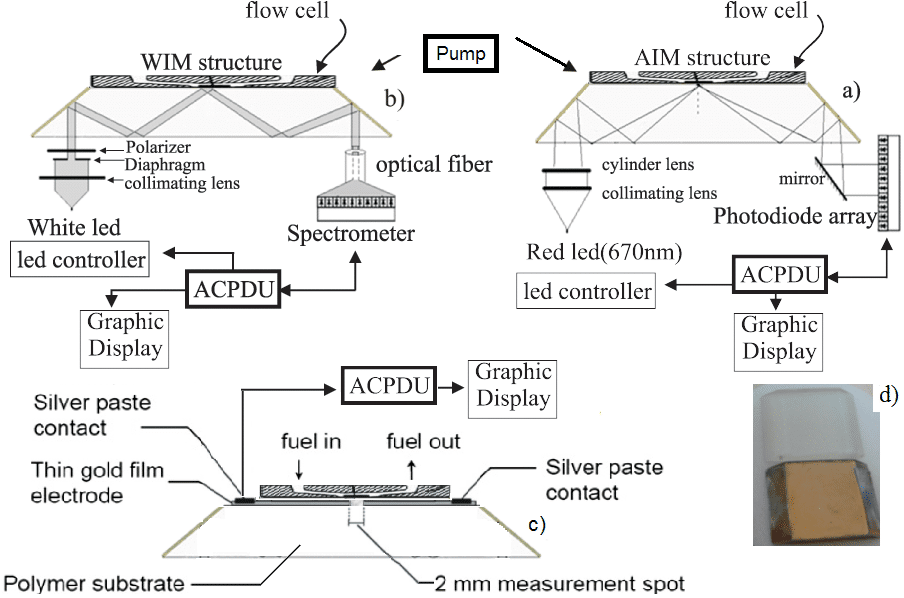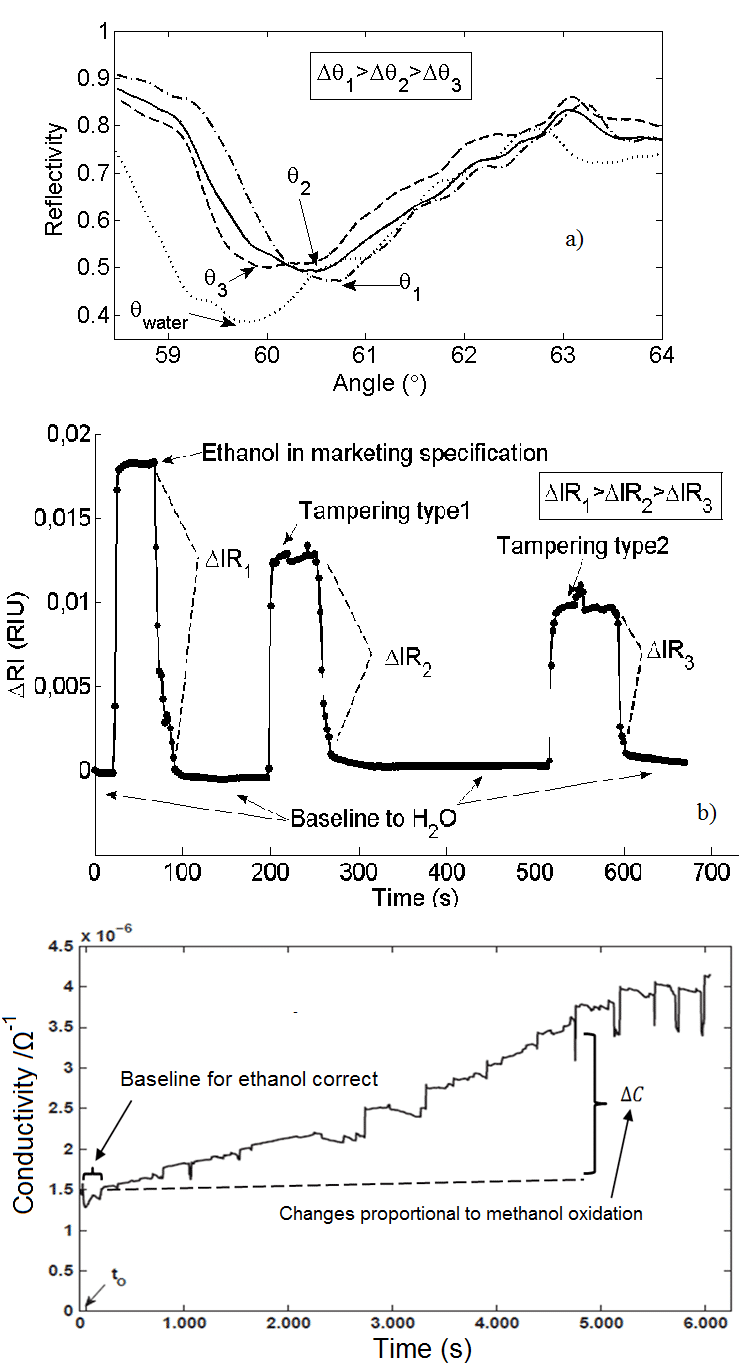
Surface Plasmon Resonance Sensor for Ethanol-Biofuel Adulteration Detection
The use of renewable fuels such as ethanol and biodiesel (from human grown biomass) has been shown a viable alternative due the eventually paucity of the non-renewable resources, such as oil products (gasoline and diesel). Ethanol has been considered an attractive alternative automotive fuel and currently are using as gasoline additive, in blends of gasoline, or as a gasoline substitute. Due flexible-fuel-vehicles becames popular in the last few years, the need for sensors capable to directly or indirectly measure the ethanol/gasoline ratio became very important [1]. Ensure the quality of biofuels is no easy task due the facility to tampers them, which can be made both in the production line or in one of various stages of the distribution cycle. Thus, an in-situ, accurate, nondestructive and reliable methods for tampering detection is necessary. This paper presents an idea that uses a disposable chip based on SPR phenomena [2] for tampering detection in fuels. Combined with in situ dc-sheet resistance monitoring (SRM) [3] becomes a simplified and reliable sensing technique towards ethanol tampering detection. The diagram of the experimental set-up are presented in Fig. 1. The prism operating at wavelength (WIM) and angular interrogation (AIM). The measurement of conductivity/resistance is via 4-measurement points, consisting of 50nm gold electrode under which silver contacts are deposited. The SPR/SRM responses are shown in Fig. 2. The water resonance angle are used to calibrated the sensor. Brazil’s ethanol tampering are due increase in water concentration or by methanol addiction in the fuel. The results demonstrate the validity of the proposed solution. References: [1] J. Gruber et al, ISBN 978-953-307-517-4 (2011), [2] L.C. Oliveira. et al., IEEE TIM. 9, 1 (2012),[3] H. Neff. et al., Bios. and Bioelec. 21, 1746 (2006).

Fig. 1: Diagram experimental set-up for SPR in a) AIM and b) WIM and c) SRM measurement. d) Polymer Prism chip photography.

Fig. 2: a) SPR curve for ethanol solutions. Ethanol in correct specification has a higher refractive index (n3) then tampering ethanol. b) n3 sensorgram discriminate the amount of water in ethanol solution and c) Conductivity sensorgram to discriminate the presence of methanol
amnlima@dee.ufcg.edu.br
Powered by Eventact EMS